Project: Audrey II Macropuppet Arms for Little Shop of Horrors, Resolution
This is the second part of a two-part series on the building of the macropuppet plant arms for the musical Little Shop of Horrors. Part one is here, in which i illustrate how we built the "skeletons" of the arms.
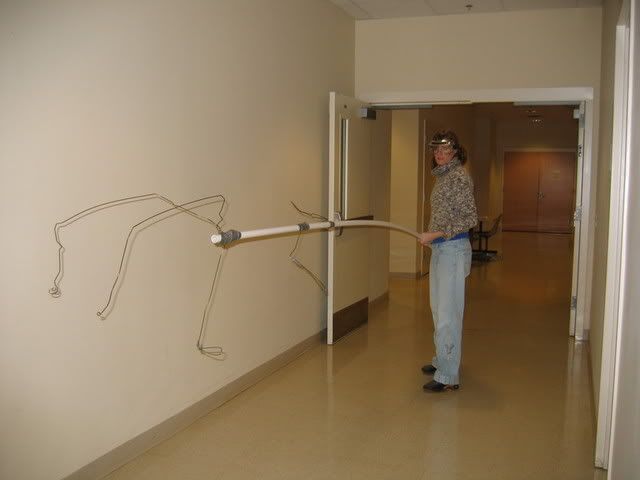
Here's where we left off last time--grad student Amanda Phillips holds an arm skeleton.
Time to hang some flesh on those plant-bones!
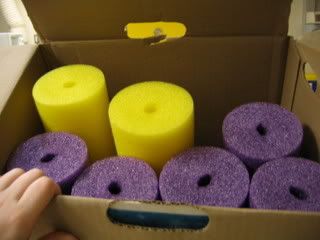
The case of pool noodles arrived Monday, ready to become musculature!
I came down with a cold midweek and couldn't devote any weeknights to working on them (soup + sleep!), but finally on Saturday i was able to return to the arm-building. I was assisted by another of my students, Grier Coleman. Grier and i cut down the noodles to manageable lengths and slit them lengthwise so we could wrap them around the PVC pipes. We secured them with tape, and used pipe insulation to cover the twiglet and "finger" wires, like so:
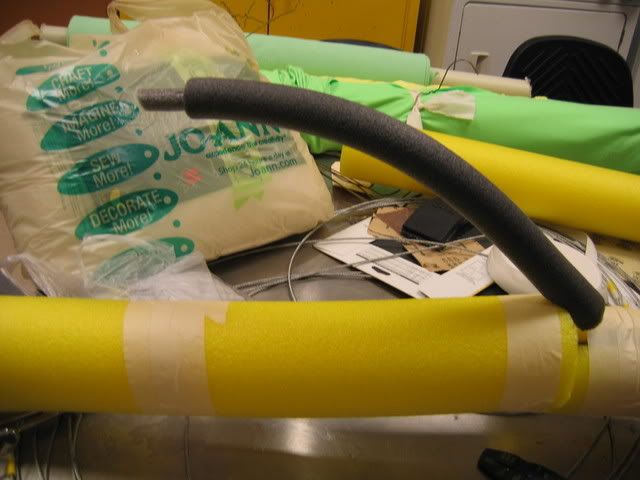
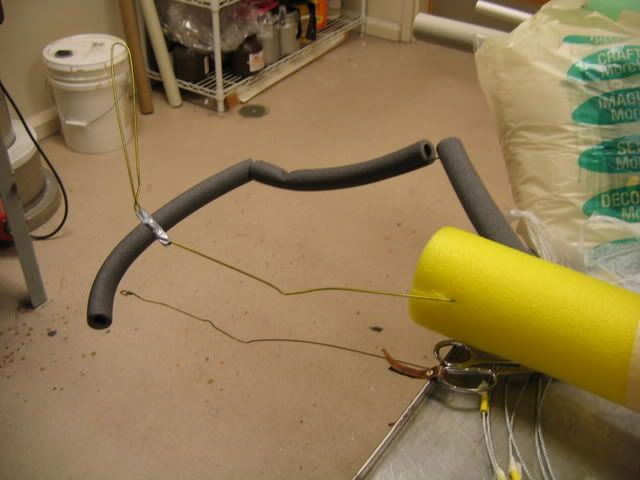
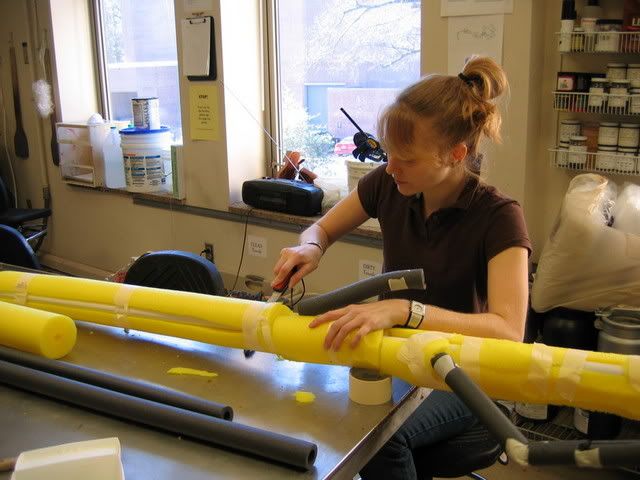
Here Grier carves the foam for a more organic-looking silhouette.
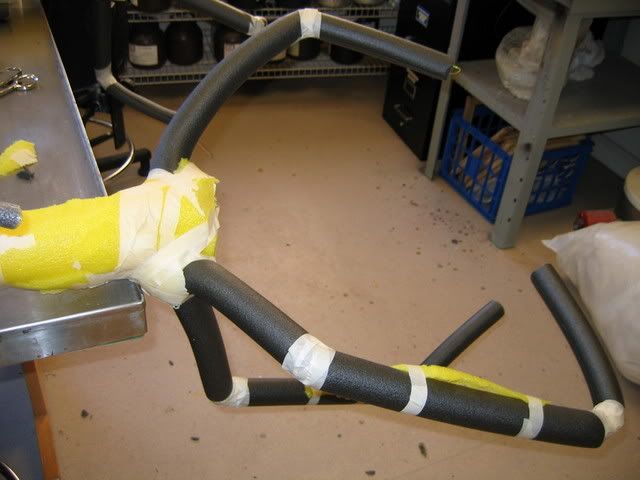
We saved the pieces that we carved off and used them to build up other areas, like these "knuckles".
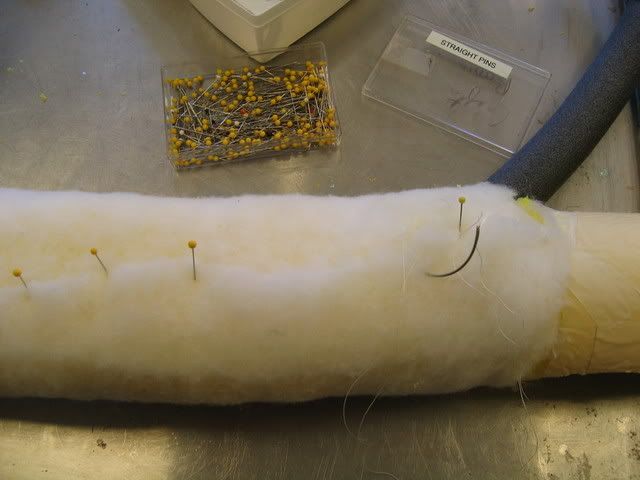
In the photo above, i have begun to wrap the foam in batting, to smooth the harsh lines of the carving. It's like using icewool or flannel to mull a hat form! We used Christmas "snow blankets," bought the week after Christmas for $1 each--way cheaper than quilt batting! The glittery bits in the snow were scratchy though, so we positioned those to the inside.
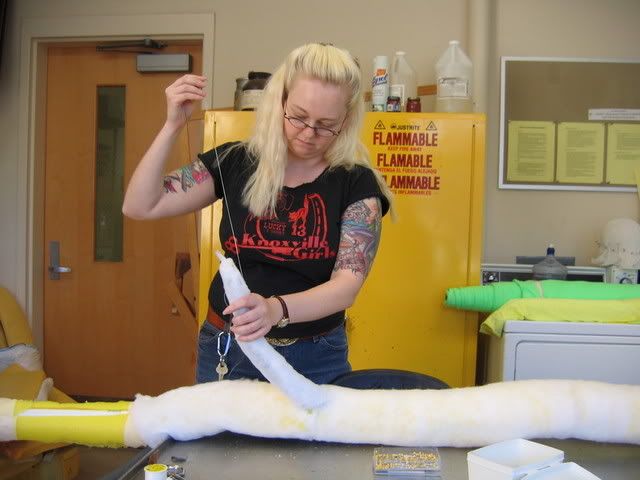
Me sewing the batting onto a twiglet.
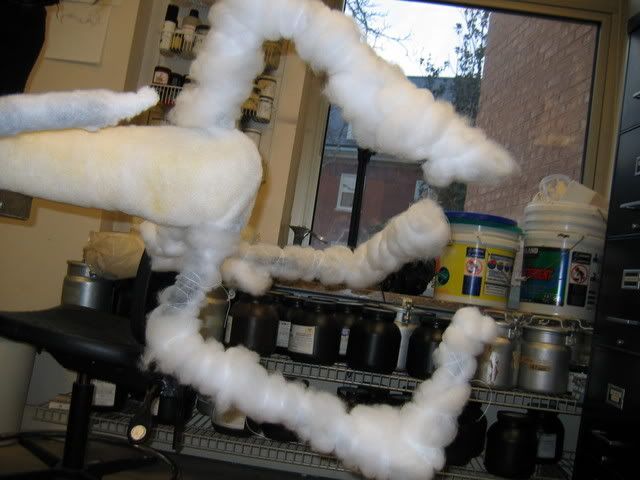
Here Grier came up with a quicker way of mulling using thread wrapping.
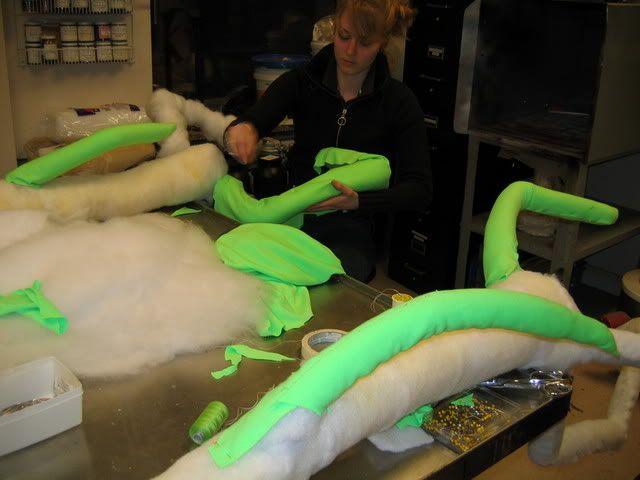
We began to cover the arms in bright green jersey knit.
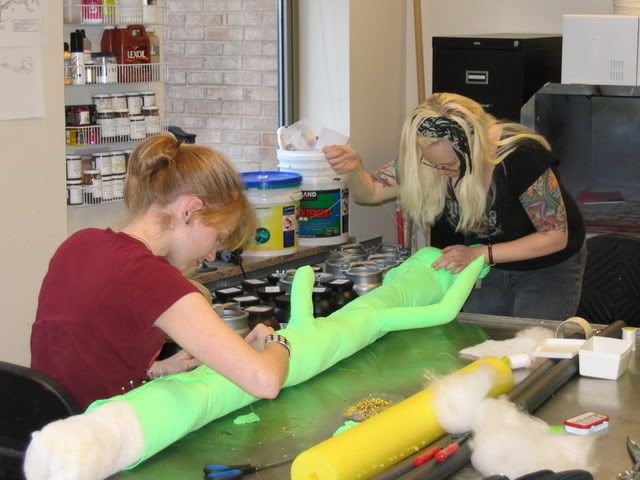
Grier and I work together to finish the second arm.
We used soft-sculpture techniques and doll needles to define areas like knuckle-bulges.

Scale shot in the rehearsal hall.
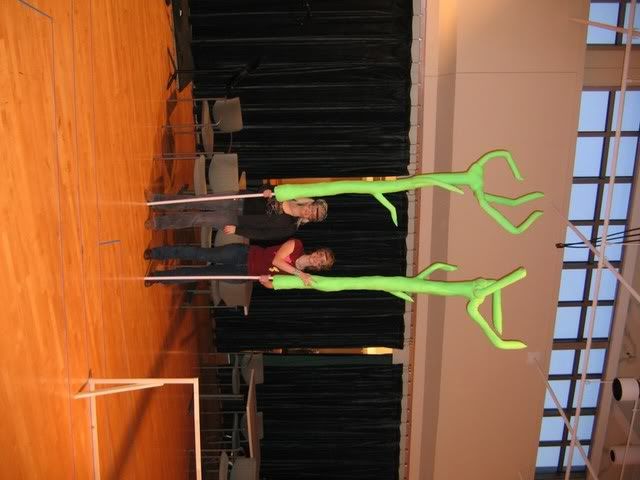
Look how tall they are!
When it came time to paint the arms, we taped up a picture of the main puppet bodies in the workroom for reference, so that the arms could be made to have similar markings (veiny bits and spotty warty bits). Then we mixed up a variety of colors in Preval spray bottles and small bowls. The paint was applied using both spraying and brush techniques. Grier and i each picked colors to be responsible for on each arm--that way the same artistic style would be used to apply the various shades on both arms, instead of each arm looking like a different painter painted it.
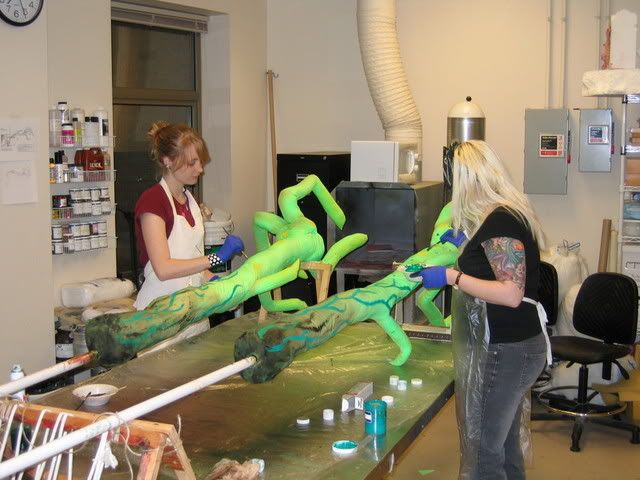
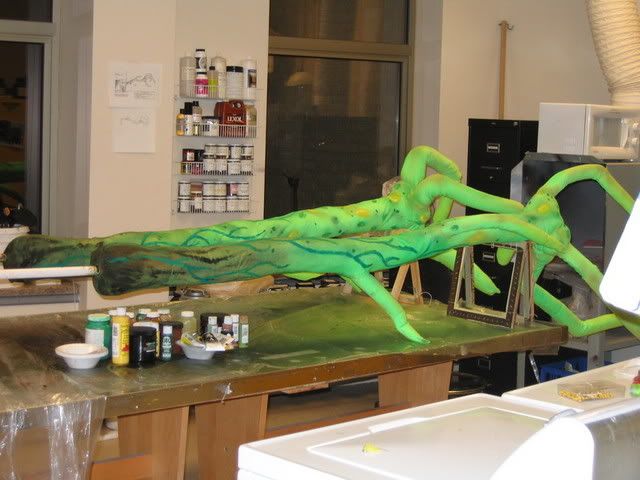
The white PVC pipe-handles will be painted to match the set and backdrops by the scenic artisans.
So, there they are, the first pair of finished arms (two of the four built). Materials-wise, the four arms wound up using four 10' PVC pipes, 50' of armature wire, five 5' pool noodles, seven 6' pipe insulation foam tubes, ten yards of green jersey knit, six bags of "snow"/batting, six Preval cartridges, and eight different colors of fabric paint. Each arm takes one artisan between 10-15 hours to complete, start to finish. These arms differ from the original "Grabbing Arms" drafts only in fabric usage (the plans call for spandex, which was cost-prohibitive for our budget so we opted for less expensive jersey knit) and in twig armature (we used wire, whereas the plans called for nylon rod or rattan caning, again for budgetary reasons).
I hope you enjoyed reading about how we did all this as much as we enjoyed engineering and creating them! And if you are in the NC Piedmont, come see the show. Tickets are free!

Here's where we left off last time--grad student Amanda Phillips holds an arm skeleton.
Time to hang some flesh on those plant-bones!

The case of pool noodles arrived Monday, ready to become musculature!
I came down with a cold midweek and couldn't devote any weeknights to working on them (soup + sleep!), but finally on Saturday i was able to return to the arm-building. I was assisted by another of my students, Grier Coleman. Grier and i cut down the noodles to manageable lengths and slit them lengthwise so we could wrap them around the PVC pipes. We secured them with tape, and used pipe insulation to cover the twiglet and "finger" wires, like so:



Here Grier carves the foam for a more organic-looking silhouette.

We saved the pieces that we carved off and used them to build up other areas, like these "knuckles".

In the photo above, i have begun to wrap the foam in batting, to smooth the harsh lines of the carving. It's like using icewool or flannel to mull a hat form! We used Christmas "snow blankets," bought the week after Christmas for $1 each--way cheaper than quilt batting! The glittery bits in the snow were scratchy though, so we positioned those to the inside.

Me sewing the batting onto a twiglet.

Here Grier came up with a quicker way of mulling using thread wrapping.

We began to cover the arms in bright green jersey knit.

Grier and I work together to finish the second arm.
We used soft-sculpture techniques and doll needles to define areas like knuckle-bulges.

Scale shot in the rehearsal hall.

Look how tall they are!
When it came time to paint the arms, we taped up a picture of the main puppet bodies in the workroom for reference, so that the arms could be made to have similar markings (veiny bits and spotty warty bits). Then we mixed up a variety of colors in Preval spray bottles and small bowls. The paint was applied using both spraying and brush techniques. Grier and i each picked colors to be responsible for on each arm--that way the same artistic style would be used to apply the various shades on both arms, instead of each arm looking like a different painter painted it.


The white PVC pipe-handles will be painted to match the set and backdrops by the scenic artisans.
So, there they are, the first pair of finished arms (two of the four built). Materials-wise, the four arms wound up using four 10' PVC pipes, 50' of armature wire, five 5' pool noodles, seven 6' pipe insulation foam tubes, ten yards of green jersey knit, six bags of "snow"/batting, six Preval cartridges, and eight different colors of fabric paint. Each arm takes one artisan between 10-15 hours to complete, start to finish. These arms differ from the original "Grabbing Arms" drafts only in fabric usage (the plans call for spandex, which was cost-prohibitive for our budget so we opted for less expensive jersey knit) and in twig armature (we used wire, whereas the plans called for nylon rod or rattan caning, again for budgetary reasons).
I hope you enjoyed reading about how we did all this as much as we enjoyed engineering and creating them! And if you are in the NC Piedmont, come see the show. Tickets are free!